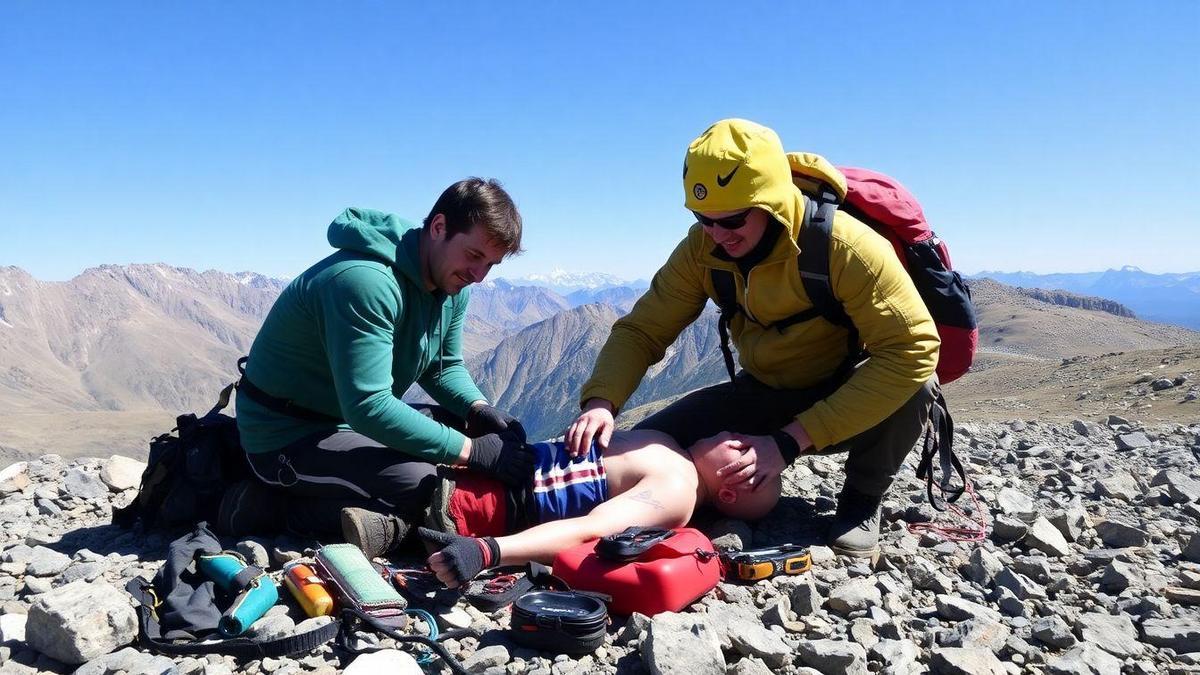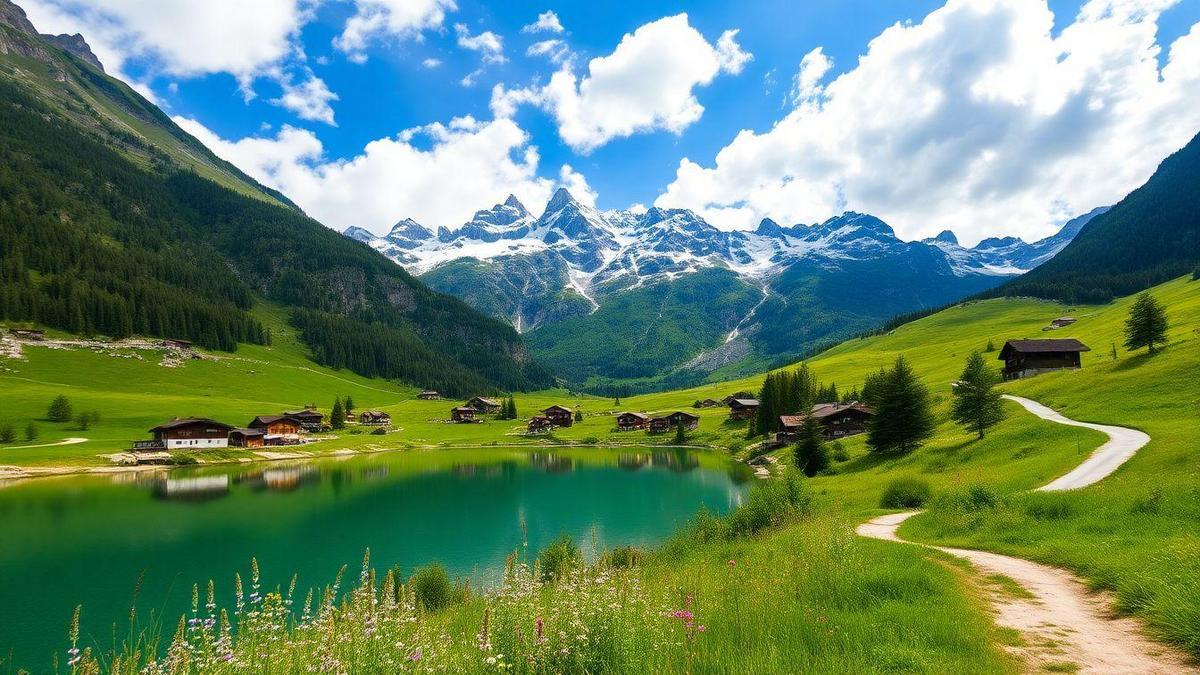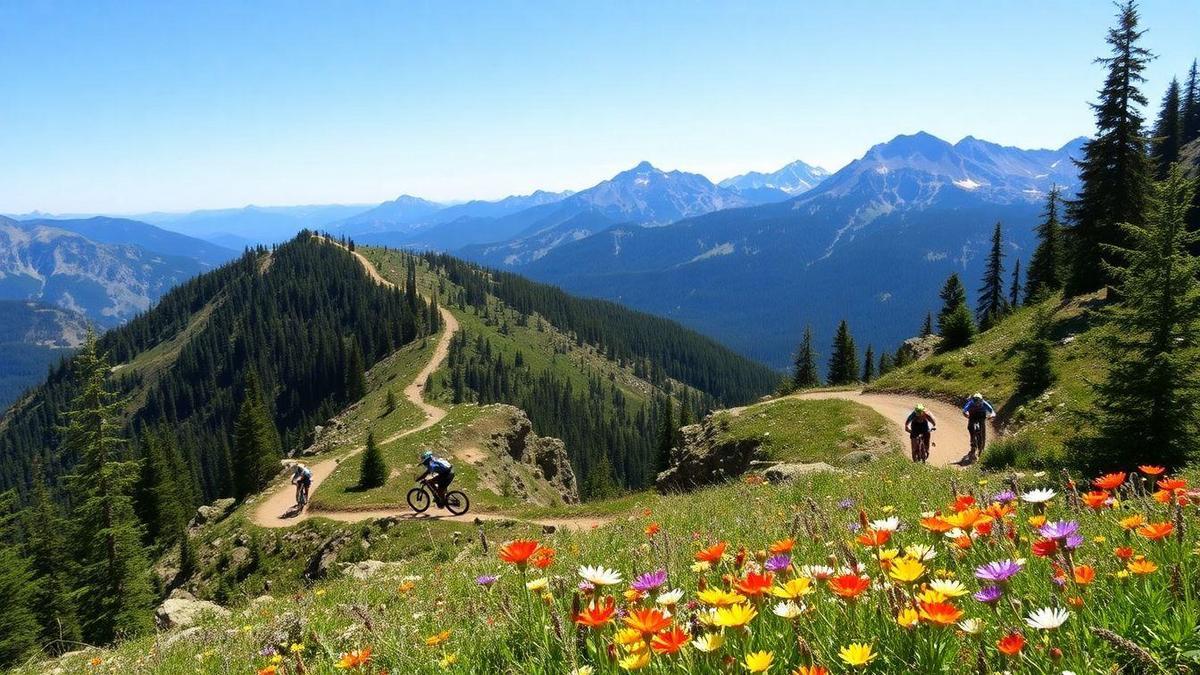
Understanding Common Mountain Climbing Accidents
Types of Injuries You Might Face
When you think about mountain climbing, you might picture breathtaking views and the thrill of adventure. But injuries can happen, and it’s important to be prepared. Here are some common injuries you might face:
- Sprains: Twisting your ankle on uneven ground can lead to sprains, which can be painful and limit your movement.
- Cuts and Scrapes: Sharp rocks or branches can cause cuts. Always keep a first aid kit handy!
- Frostbite: If you’re climbing in cold weather, frostbite can set in if your skin gets too cold. This can happen on fingers, toes, and ears.
- Altitude Sickness: As you climb higher, the air gets thinner. This can lead to headaches, nausea, and dizziness.
Causes of Mountain Climbing Accidents
Mountain climbing accidents often happen due to a few key reasons. Understanding these can help you stay safer. Here are some causes to consider:
- Inexperience: Not knowing how to climb properly can lead to accidents.
- Weather Changes: Sudden storms can make climbing dangerous. Always check the weather before you go.
- Poor Equipment: Using worn-out gear can put you at risk. Make sure your equipment is in good shape.
- Fatigue: Climbing can be tiring. If you’re too tired, you might make mistakes.
Recognizing the Risks of Climbing
Climbing comes with its share of risks. It’s like dancing on the edge of a knife; one wrong move can lead to trouble. Here are some risks to keep in mind:
| Risk | Description |
|---|---|
| Falls | Slipping or losing grip can lead to serious injuries. |
| Rockfalls | Loose rocks can fall, posing a danger to climbers below. |
| Weather Hazards | Rain, snow, or lightning can make climbing unsafe. |
| Wildlife Encounters | Meeting animals can be dangerous if you’re not cautious. |
Knowing these risks can help you prepare better. Always stay alert and be aware of your surroundings.
Essential First Aid Measures for Accidents During Mountain Climbing
Immediate Steps to Take After an Injury
When you’re out there on the mountain, accidents can happen in the blink of an eye. If you or someone in your group gets hurt, it’s crucial to stay calm. First, assess the situation. Check for any serious injuries, like bleeding or broken bones. If someone is bleeding, apply pressure to the wound with a clean cloth or your hands.
Next, move to a safe spot if you’re in a dangerous area. If the injured person can walk, help them to a safer location. If they can’t move, stay put and call for help if you have a phone. Remember, your safety is key.
Here’s a quick checklist of immediate steps to follow:
| Step | Action |
|---|---|
| Assess the injury | Check for serious wounds or broken bones |
| Apply pressure | Use a clean cloth for bleeding |
| Move to safety | Help the injured person if possible |
| Call for help | Use your phone if you can |
Creating a First Aid Kit for Your Climb
Having a first aid kit is like packing an insurance policy for your adventure. It’s smart to carry a kit that’s ready for anything. Before you head out, think about what you might need. A well-stocked kit can make a big difference when emergencies arise.
Here’s what you should include in your first aid kit:
Must-Have Items for Outdoor Emergency Response
- Adhesive bandages – for small cuts and scrapes.
- Gauze pads – to cover larger wounds.
- Antiseptic wipes – to clean wounds.
- Pain relievers – like ibuprofen or acetaminophen.
- Elastic bandage – for sprains or strains.
- Tweezers – to remove splinters or ticks.
- Scissors – for cutting tape or clothing.
- Emergency blanket – to keep warm if needed.
Make sure to check your kit before each climb. Replace any used items and ensure everything is in good condition. Having these supplies can help you tackle those unexpected bumps in the road.
The Importance of Climbing Safety Precautions
When you’re out there on a mountain, the thrill of the climb can be exhilarating. But remember, safety is your best friend. Climbing safety precautions are vital to keep you and your climbing buddies safe. They help prevent accidents and injuries, making your adventure enjoyable and memorable.
How to Prepare for Your Climb
Preparation is key to a successful climb. Here are some steps you can take:
- Research the Route: Know what you’re getting into. Look up the trail, its difficulty, and the weather conditions. For a comprehensive guide on essential gear, check out this beginner’s guide.
- Plan Your Time: Start early so you can finish before dark. Daylight is your ally on the mountain.
- Stay Hydrated and Nourished: Bring enough water and snacks. Your body needs fuel to keep going.
Safety Gear That Can Save Lives
Having the right gear can be a game-changer. Here’s a list of essential items to pack:
| Safety Gear | Purpose |
|---|---|
| Helmet | Protects your head from falling rocks |
| Harness | Keeps you secure when climbing |
| Ropes | Essential for safety and support |
| First Aid Kit | For immediate care if something goes wrong |
Essential Climbing Gear for Injury Prevention
In addition to safety gear, consider these items to help prevent injuries:
- Proper Footwear: Invest in sturdy climbing shoes. They provide grip and support. For more on essential gear, explore this winter climbing gear guide.
- Gloves: Protect your hands and improve your grip.
- Knee Pads: They can help if you need to crawl or kneel on rough terrain.
By taking these precautions, you can focus on the beauty around you without worrying about what could go wrong. Remember, first aid measures for accidents during mountain climbing are crucial, but prevention is the best strategy.
Trauma Care for Climbers: What You Need to Know
Basic First Aid Techniques for Common Injuries
When you’re out climbing, accidents can happen. It’s important to know some basic first aid techniques for common injuries. Here’s a quick guide to help you be prepared:
| Injury | First Aid Steps |
|---|---|
| Cuts and Scrapes | Clean the wound with water, apply antiseptic, and cover with a bandage. |
| Sprains | Rest the injured area, ice it for 20 minutes, and wrap it with a bandage. |
| Burns | Cool the burn with running water, cover with a clean cloth, and avoid ice. |
| Fractures | Keep the person still, immobilize the area with a splint, and seek help. |
Always remember to stay calm. Your response can make a big difference. If someone is hurt, take a deep breath and follow these steps. You’ll feel more in control, and that can help the injured person too.
When to Seek Professional Help
Sometimes, injuries can be serious. It’s crucial to know when to seek professional help. If you notice any of these signs, don’t hesitate:
- Severe pain that doesn’t go away
- Swelling that gets worse
- Difficulty moving the injured part
- Signs of infection, like redness or pus
If you’re unsure, it’s always better to be safe than sorry. Call for help if you think it’s needed.
Understanding the Need for Wilderness First Aid
Climbing in the wild is different from getting hurt at home. Wilderness First Aid focuses on treating injuries when you’re far from medical help. It’s important to understand this because:
- Response time is longer in remote areas.
- You may need to improvise with limited supplies.
- Knowing how to handle emergencies can save lives.
Consider taking a wilderness first aid course. This training can equip you with the skills to handle unexpected situations.
Dealing with Altitude Sickness: First Aid Measures
Symptoms You Should Watch For
When you’re climbing a mountain, it’s crucial to pay attention to how your body feels. Altitude sickness can sneak up on you, and you want to catch it before it gets serious. Here are some signs to keep an eye out for:
- Headache: A thumping pain that just won’t quit.
- Nausea: Feeling queasy, like you might throw up.
- Dizziness: The world feels like it’s spinning.
- Fatigue: You feel more tired than usual, even if you haven’t done much.
- Shortness of breath: Breathing feels harder than it should.
If you notice any of these symptoms, it’s a sign that your body is struggling with the altitude. Don’t ignore them; your safety is the priority!
Effective Treatments for Altitude Sickness
If you or someone in your group starts showing symptoms, there are some first aid measures you can take right away. Here’s a simple list of treatments to consider:
- Rest: Find a safe spot and take a break. Your body needs time to adjust.
- Hydrate: Drink plenty of water. Staying hydrated can help ease symptoms.
- Oxygen: If available, using supplemental oxygen can provide quick relief.
- Medication: Over-the-counter pain relievers like ibuprofen can help with headaches. In some cases, doctors might recommend acetazolamide (Diamox) to help you adjust to the altitude.
Recognizing When to Descend for Safety
Knowing when to turn back is key to staying safe. If symptoms worsen despite your efforts, it’s time to descend. Here’s a quick guide:
| Situation | Action |
|---|---|
| Symptoms improve with rest and hydration | Stay put and monitor closely |
| Symptoms stay the same or get worse | Start descending immediately |
| Severe symptoms (like confusion) | Descend urgently, seek help |
Remember, it’s better to be safe than sorry. The mountain will still be there when you’re feeling better!
Mountain Rescue Techniques: What to Do in Emergencies
How to Signal for Help
When you’re in trouble on a mountain, knowing how to signal for help can be a lifesaver. Here are some effective ways to catch the attention of rescuers:
- Whistles: A whistle can be heard from far away. Three short blasts is a universal distress signal.
- Mirrors: If you have a mirror, use it to reflect sunlight. Aim for the direction of potential rescuers.
- Bright Colors: Wear bright clothing or gear. If you can, spread them out to make yourself more visible.
- Fire: If it’s safe, a fire can create smoke that can be seen from a distance.
Collaborating with Rescue Teams
When help arrives, working with rescue teams is crucial. Here’s how you can make the process smoother:
- Stay Calm: Panic can lead to mistakes. Take a deep breath and focus.
- Provide Information: Tell rescuers your location, what happened, and any injuries.
- Follow Instructions: Rescuers are trained for emergencies. Listen to their guidance and follow their lead.
Preparing for a Mountain Rescue Situation
Preparation can make all the difference when facing a mountain emergency. Here are some steps to consider:
| Preparation Steps | Details |
|---|---|
| Know Your Route | Familiarize yourself with the trails and terrain. |
| Carry a First Aid Kit | Always have a kit with essential supplies. |
| Inform Someone | Let someone know your plans and expected return time. |
| Practice Signals | Regularly practice how to signal for help. |
Being ready can help you stay safe and respond quickly.
Frequently Asked Questions
What should you do for a sprained ankle while mountain climbing?
Rest, ice, compress, and elevate the ankle. Use a bandage for support. If the pain is severe, seek help.
How can you treat a cut or scrape?
Clean the wound with water. Apply antibiotic ointment. Cover with a bandage to protect it.
What if someone has a snake bite during a climb?
Keep the person calm. Immobilize the affected area. Get medical help immediately. Do not suck the venom.
How do you handle a fall with a possible fracture?
Keep the person still. Support any broken area. Call for help and do not move them unless necessary.
What are the first aid measures for accidents during mountain climbing?
Always carry a first aid kit. Know basic first aid skills. Stay calm and help others as needed. Remember, first aid measures for accidents during mountain climbing are essential for ensuring safety and preparedness.


